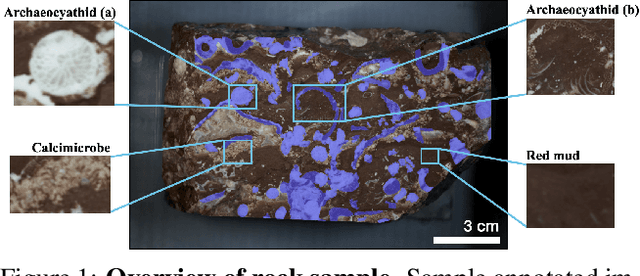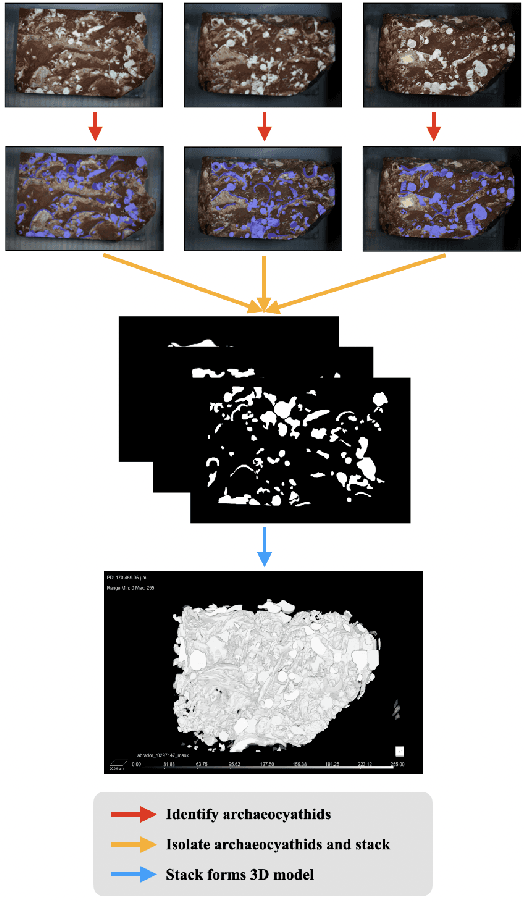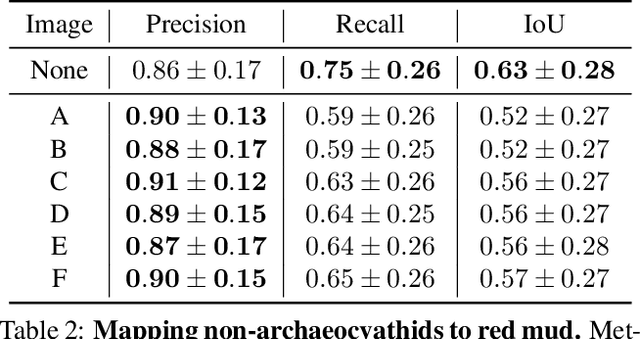Improving Fine-Grain Segmentation via Interpretable Modifications: A Case Study in Fossil Segmentation
Paper and Code
Oct 08, 2022



Most interpretability research focuses on datasets containing thousands of images of commonplace objects. However, many high-impact datasets, such as those in medicine and the geosciences, contain fine-grain objects that require domain-expert knowledge to recognize and are time-consuming to collect and annotate. As a result, these datasets contain few annotated images, and current machine vision models cannot train intensively on them. Thus, adapting interpretability techniques to maximize the amount of information that models can learn from small, fine-grain datasets is an important endeavor. Using a Mask R-CNN to segment ancient reef fossils in rock sample images, we present a general paradigm for identifying and mitigating model weaknesses. Specifically, we apply image perturbations to expose the Mask R-CNN's inability to distinguish between different classes of fossils and its inconsistency in segmenting fossils with different textures. To address these shortcomings, we extend an existing model-editing method for correcting systematic mistakes in image classification to image segmentation and introduce a novel application of the technique: encouraging a greater separation between positive and negative pixels for a given class. Through extensive experiments, we find that editing the model by perturbing all pixels for a given class in one image is most effective (compared to using multiple images and/or fewer pixels). Our paradigm may also generalize to other segmentation models trained on small, fine-grain datasets.
 Add to Chrome
Add to Chrome Add to Firefox
Add to Firefox Add to Edge
Add to Edge